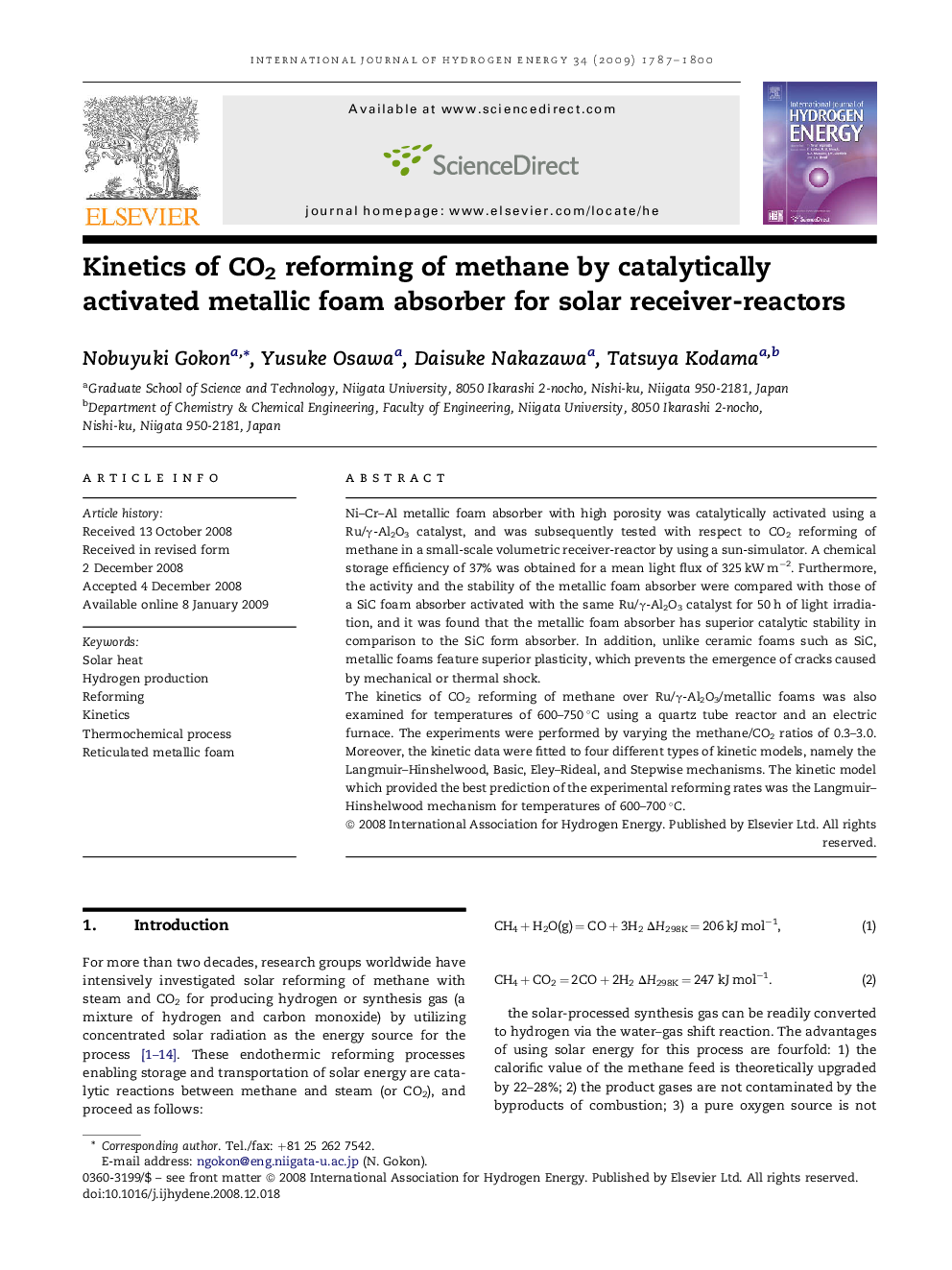| Article ID | Journal | Published Year | Pages | File Type |
|---|---|---|---|---|
| 1274299 | International Journal of Hydrogen Energy | 2009 | 14 Pages |
Ni–Cr–Al metallic foam absorber with high porosity was catalytically activated using a Ru/γ-Al2O3 catalyst, and was subsequently tested with respect to CO2 reforming of methane in a small-scale volumetric receiver-reactor by using a sun-simulator. A chemical storage efficiency of 37% was obtained for a mean light flux of 325 kW m−2. Furthermore, the activity and the stability of the metallic foam absorber were compared with those of a SiC foam absorber activated with the same Ru/γ-Al2O3 catalyst for 50 h of light irradiation, and it was found that the metallic foam absorber has superior catalytic stability in comparison to the SiC form absorber. In addition, unlike ceramic foams such as SiC, metallic foams feature superior plasticity, which prevents the emergence of cracks caused by mechanical or thermal shock.The kinetics of CO2 reforming of methane over Ru/γ-Al2O3/metallic foams was also examined for temperatures of 600–750 °C using a quartz tube reactor and an electric furnace. The experiments were performed by varying the methane/CO2 ratios of 0.3–3.0. Moreover, the kinetic data were fitted to four different types of kinetic models, namely the Langmuir–Hinshelwood, Basic, Eley–Rideal, and Stepwise mechanisms. The kinetic model which provided the best prediction of the experimental reforming rates was the Langmuir–Hinshelwood mechanism for temperatures of 600–700 °C.
